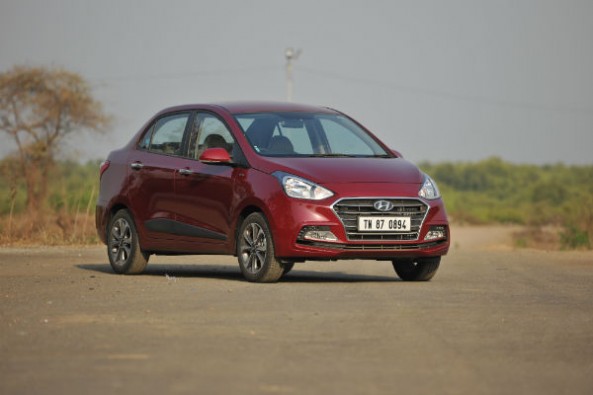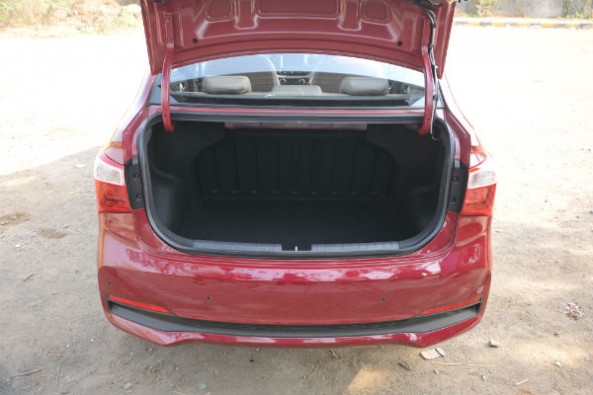The Xcent was Hyundai’s first sub-four-metre sedan - the company launched the car way back in 2014. Hyundai, with the recent facelift of the Xcent, however, has improved this car in areas it was underperforming.
On the outside
For starters, it looks quite different from the earlier car when viewed from the front. The new nose is bold and sticks out prominently. The bonnet hasn’t been re-profiled, but the bumper, grille and chin are completely changed. The new ‘cascading grille’ is an evolution of Hyundai’s hexagonal grille. Right beside the grille sit a pair of horizontally located fog lamps with LED surrounds. And the chin of the new Xcent also has air inlets in the bumper.

The new grille does look a bit oversized and flashy however. While there aren’t too many changes around the sides, apart from the larger new wheels, the rear of the car has also been thoroughly updated. The new tail-lights make the rear of the car look almost Audi-like and because the base of the bumper has been widened, the view from the back looks extremely muscular.
On the inside
The major change inside is the updated 7.0-inch touchscreen. It comes with the same new software that’s on its big sister, the Elantra, and the system allows drivers to use Apple CarPlay and Android Auto, among multiple other useful apps. Connecting your phone is nice and easy and CarPlay works well here.

There’s a huge step up in terms of quality of materials too. The fit and finish of the dash, the way in which the steering is crafted, the deft way the controls function, all point to a very high level of sophistication. The finish of the steering wheel is, in fact, so good, the detailing so fine that it feels like it’s from a more expensive car. The gear lever is exquisite too - its chrome, leather and Plexiglas finish is a complete joy to hold. Like earlier, the cabin isn’t too wide and sitting three abreast in the back will be tight. But even backseat comfort is good. There’s a fair amount of legroom, the seat base is placed at a good height and you even get an air-con vent to keep you cool. The backrest is a bit too reclined though and not as comfortable as it could have been.
Power Torque
This car is also much better to drive. The engine, which at 1,186cc, is now higher in both capacity and power. It now makes 75hp (up 3hp) and 190Nm of torque from as low as 1,750rpm. Start the car and it settles into a lumpy idle. It’s not as smooth as a petrol three-cylinder for sure, but insulation seems to be better than on the earlier car. Put your foot down and the engine comes to life, with that little bit extra filtering through as you cross 2,000rpm. As a result, the best way to drive this car is to keep the motor going above 2,000rpm.

From behind the wheel
Performance is quite strong and effortless, a huge improvement over the earlier car. Even flat-out performance is much better. 0-100, for example, now only takes 15.58sec as against 18.61sec for the earlier car. After 3,500rpm though, the Xcent does not accelerate quite as strongly or as smoothly, with a bit of a rattle also emanating from under the bonnet.

Hyundai has also improved bump absorption and ride quality on this car as well. There’s a fair amount of suppleness in the suspension, bad patches are ridden over with consummate ease and insulation is great, so you hardly ever hear the wheels thumping over rough ground. Only sharp bumps and ridges tend to unsettle it. The steering and handling have also been improved. The steering feels lighter to use, is smoother to operate and is more accurate.
Is it worth the money?
The facelifted Hyundai Xcent is a big step forward over the earlier car - it is nicer to drive and much nicer to sit in. If you are in the market for compact sedan, this manages to tick almost every box.















